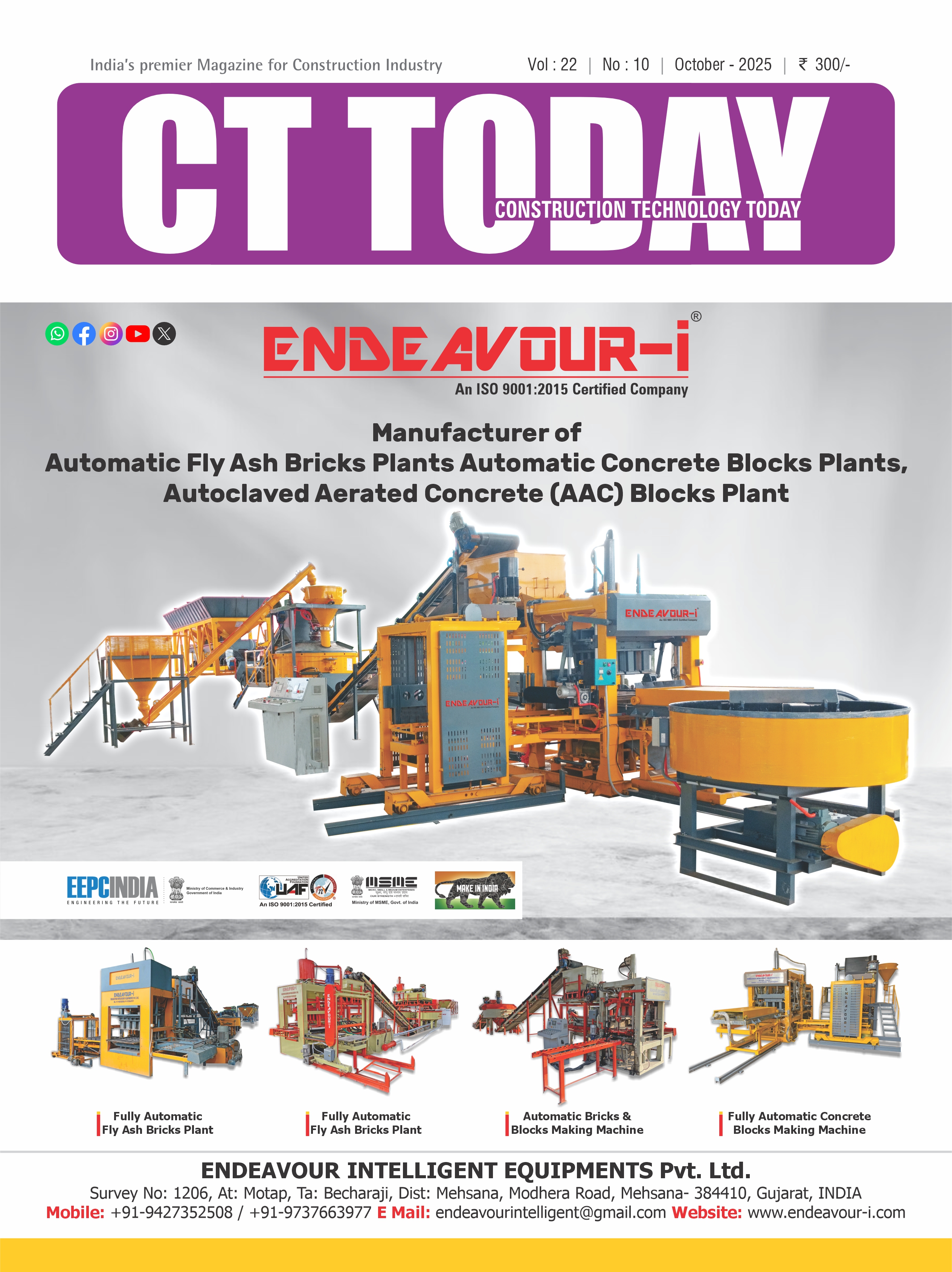With a host of benefits, vast application in building and infrastructure projects, and emerging concrete innovations, precast concrete technology is setting trend in construction industry. Precast concrete has continued to grow in popularity over the years due to its efficiency, strength and durability.
Unlike concrete that is poured on site (in-situ concrete or cast in place), high quality precast concrete is produced in a controlled factory environment using advanced manufacturing techniques. Reinforcement is placed into reuseable and adjustable moulds, and concrete is poured, vibrated and cured. If specified, architectural finishes (such as honing, polishing or staining) may then be applied while still in the factory. The finished precast elements are then transported to site and then craned into position.
Conventional cast in place concrete construction consumes substantial amount of the construction time by scaffolding, forming, placing and curing of concrete. Using a precast concrete system offers many potential advantages over onsite casting. Precast concrete construction will save valuable time and helps to reduce the risk of project delay. Precast concrete production can be performed on ground level, which maximizes safety in its casting. There is greater control over material quality and workmanship in a precast plant compared to a construction site. The forms used in a precast plant can be reused hundreds to thousands of times before they have to be replaced, often making it cheaper than onsite casting in terms of cost per unit of formwork.
Precast concrete products are often more durable than products poured on site. Additionally, unlike casting concrete in-situ, weather conditions do not pose a problem for precasting. During rain, hail or shine, the same results can be achieved in a controlled factory environment, thereby ensuring consistent product quality. The use of precast concrete in construction is now widely regarded as an economic, durable, structurally sound, fire resistant, environment friendly and aesthetically superior form of construction.
Precast Products and Application
Precast concrete finds its application in building and infrastructure projects where large numbers of identical components or structures are used.
Precast concrete is used for both architectural and structural applications on all types of buildings from low-rise to high-rise. Structural applications of precast concrete include foundations, beams, floors, walls, staircases and other structural components.
Precast concrete is employed in a wide range of engineered earth retaining systems. Precast concrete retaining systems include mechanically stabilized earth (MSE) face panels, large precast modular blocks (PMB), segmental retaining wall (SRW) products, cantilever walls, crib walls and post-and-panel systems.
Utility structures are an important segment of the manufactured concrete products industry.
Precast concrete is ideally
suited for all types of utility structure applications including electrical,
gas, industrial, telecommunications, renewable energy structures, and water and
wastewater structures. Products include: hand holes, hollow-core products,
light pole bases, meter boxes, panel vaults, pull boxes, telecommunications
structures, transformer pads, transformer vaults, trenches, utility buildings,
utility vaults, utility poles, controlled environment vaults (CEVs), and other
utility structures.
Precast concrete transportation products are used in the construction, safety, and site protection of road, airport, and railroad transportation systems. Products include: box culverts, 3-sided culverts, bridge systems, railroad crossings, railroad ties, sound walls/barriers, jersey barriers, tunnel segments, concrete barriers, central reservation barriers, bollards, and other transportation products. Precast concrete can also be used to make underpasses, surface-passes, and pedestrian subways.
All types of bridges use precast to build both the superstructure and the substructure including vehicular, pedestrian, railroad, pipeline, and dock bridges. Flat slabs, neighbouring box beams, pretensioned beams, as well as spliced and curved girders are examples of superstructures. Precast end bents, piles, and pile bent caps, along with precast columns, are examples of substructures.
Precast can be used on a variety of marine projects including docks, piers, piles, channel walls, break walls, and more. Precast is inherently resistant to extreme conditions such as hurricanes, storm surge, and flying debris. When designed with heavy weight in mind, precast products counteract the buoyant forces of water significantly better than most materials.
Emerging Material Trends in Precast Concrete Technology
As a material on the leading edge of concrete innovation, Ultra High Performance Concrete (UHPC) provides a new technology to expand a precaster’s business with new products and solutions. The material’s combination of superior properties facilitates the ability to design thin, complex shapes, curvatures and highly customized textures – applications which are difficult or impossible to achieve with traditional reinforced concrete elements. UHPC is a range of formulations which may be used for many different architectural and structural applications.
Self Consolidating Concrete (sometimes called self compacting), or SCC, is a dream material for precasters. Not only does it virtually eliminate the need for vibrators, it allows much higher pour rates and fewer workers, results in glassy smooth surfaces, and can provide the finest of details in the casting. SCC is a very high-slump, flowable concrete proportioned to eliminate segregation and voids.
Pervious Concrete is traditionally used in parking areas, areas with light traffic, residential streets, pedestrian walkways, and greenhouses. Pervious concrete requires very precise mix control and conditions to ensure that the result is acceptable; coupled with the increased use of precast for roads and parking, this opens up the market to new opportunities. Pervious concrete is made using large aggregates with little to no fine aggregates. The concrete paste then coats the aggregates and allows water to pass through the concrete slab.
Precast Concrete Market
The precast concrete industry is largely dominated by Government initiated projects for infrastructural development. However, these are also being extensively used for residential (low and high rise) and commercial constructions because of their various favourable attributes. The efficiency, durability, ease, cost effectiveness, and sustainable properties of these products have brought a revolutionary shift in the time consumed in construction of any structure. Construction industry is a huge energy consuming industry, and precast concrete products are and will continue to be more energy efficient than its counterparts. The wide range of designs, colours, and structural options that these products provide is also making it a favourable choice for its consumers.








